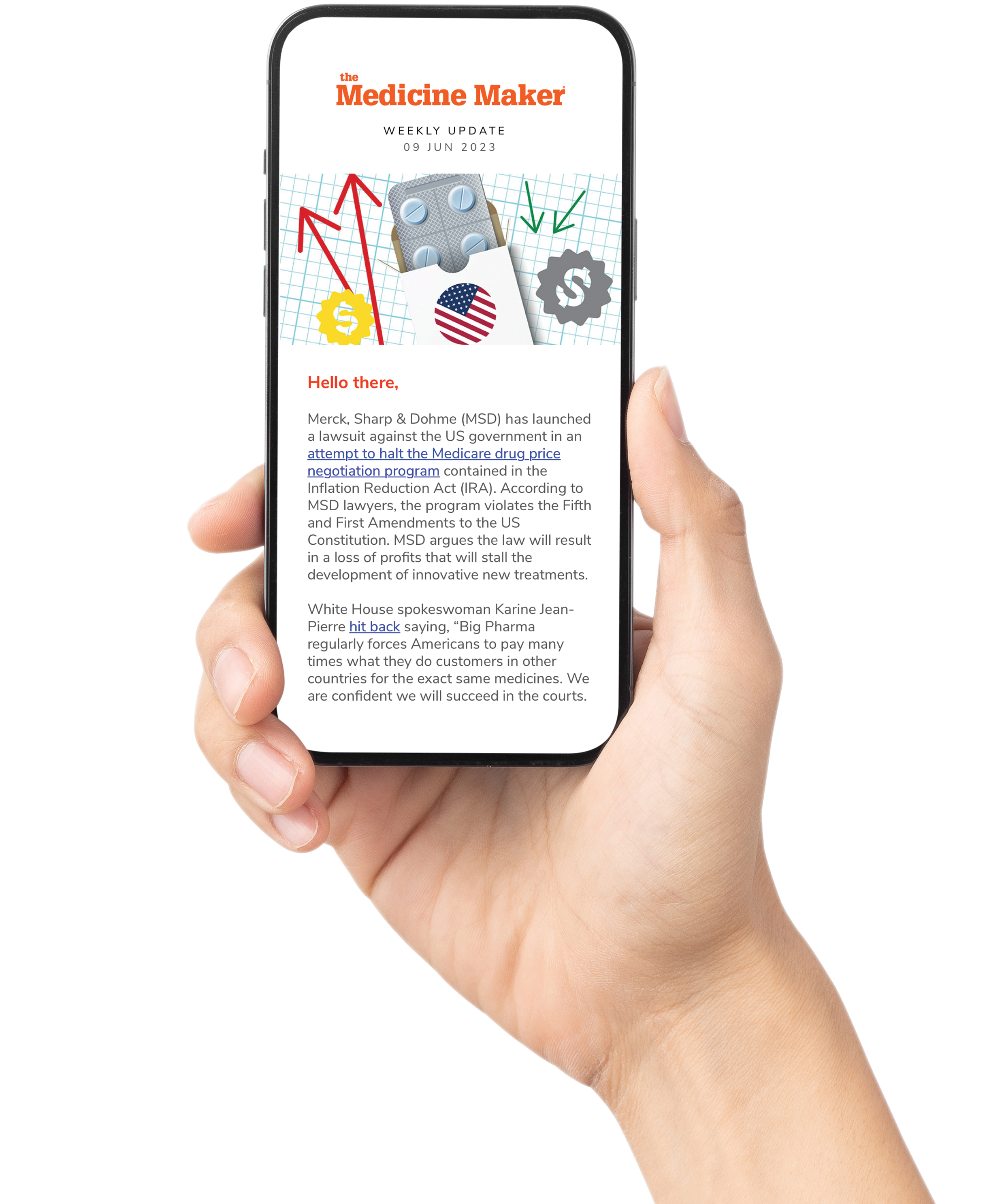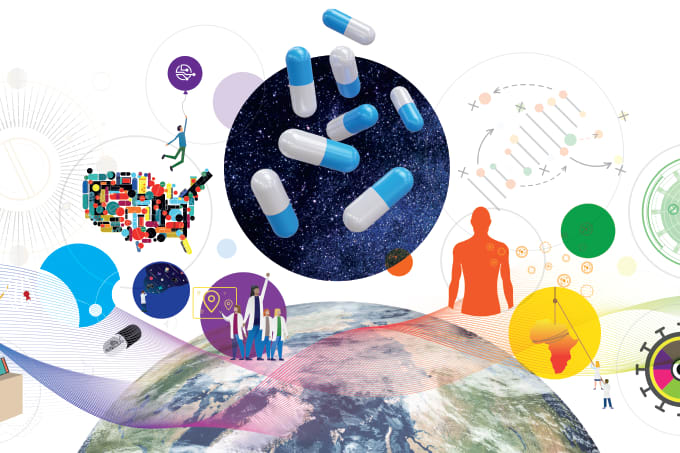Pharma is one of the most innovative industries in the world, but new therapeutics are only one part of the story; innovation in facilities and manufacturing approaches are essential to bring new medicines to patients. Every year, ISPE celebrates the Facility of the Year Awards (FOYA).
How are pharma’s new facility projects evolving with the times? Who is exemplifying new applications of process manufacturing techniques? Or new technologies? Who is helping to make the world a better place through sustainability excellence? Who is truly making a difference in unmet needs?
We interview Scott Billman, Senior Vice President of Global Engineering, Technology, and Facilities with Solventum, Immediate Past Chair of the ISPE International Board of Directors – and a FOYA judge – to learn more about the 2025 awards, the winners, and trends in facilities and manufacturing.
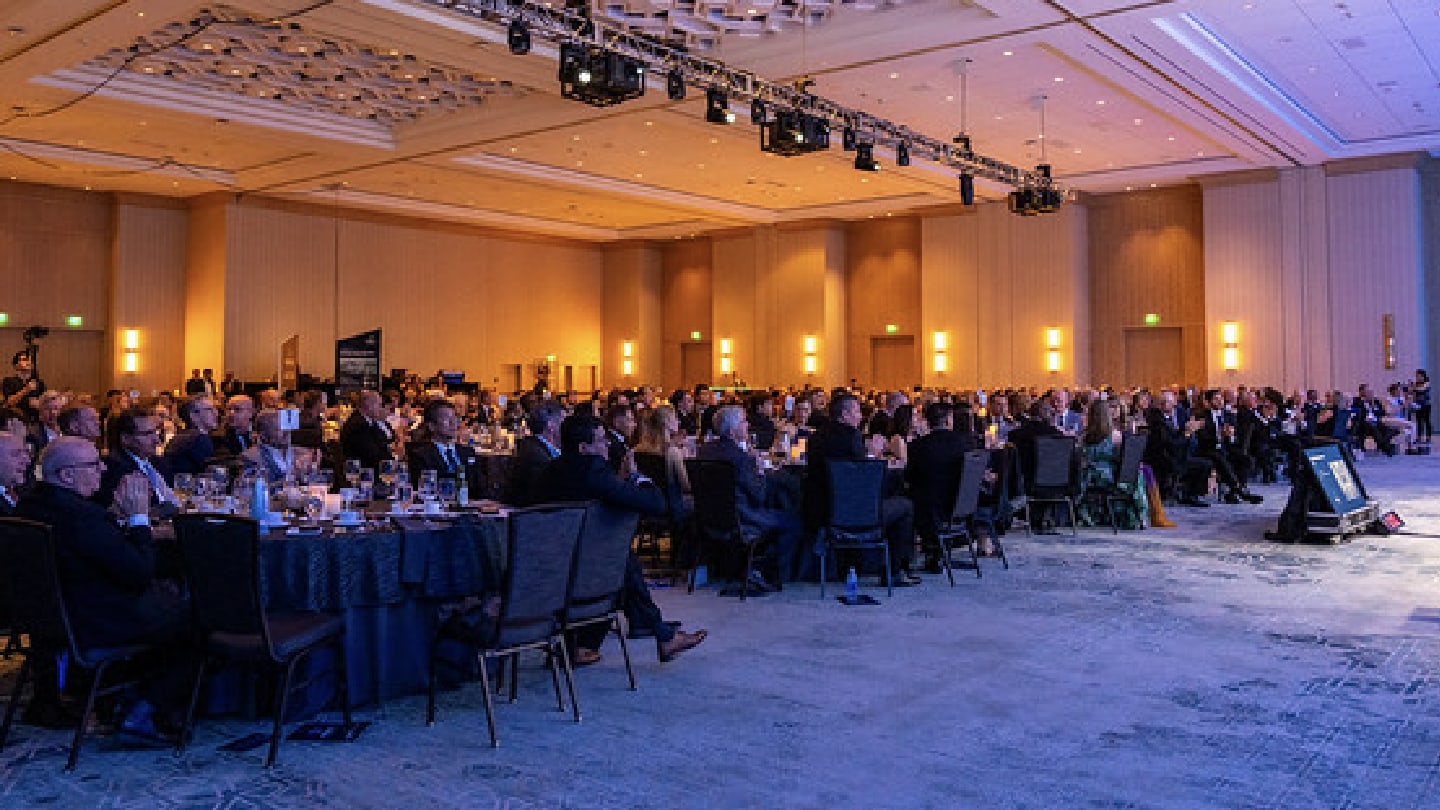
How did you get involved with ISPE? And how did you become a FOYA judge?
When I first started in pharmaceutical engineering, I was working for a small consulting firm. One of the owners happened to be an early founder of ISPE – and a major contributor to its development when it was first getting off the ground. He told me, “You have to join ISPE. You have to go to the meetings.” That’s really what got me started.
I joined ISPE in 1996 – and it’s a fantastic organization. What’s special about ISPE is that it has a huge global presence, and also a really strong foundation of local ISPE Affiliates and Chapters. Because I was in the Philadelphia area – where there are a lot of biopharma companies – the local chapter was very active. These local events brought together so many people from across the pharmaceutical industry, which taught me about new technologies and what different companies were doing.
It was such a great forum that I stayed involved, and eventually became engaged at the international level.
As for becoming a FOYA judge, the panel is mostly made up of senior people who have significant experience in managing, executing, and overseeing a wide variety of new facility projects and builds.
How have the award categories evolved over time?
When the awards first started, the focus was really on design, execution, construction, and facility startup. They were very engineering- and construction-focused.
Over time, the categories have evolved. We’ve gone beyond technical engineering expertise, documents, and training to address new areas, such as sustainability and social impact, which includes recognition for facilities that address unmet medical needs, help alleviate drug shortages, or establish manufacturing capacity in regions of the world that don’t typically have it.
A lot has also changed since COVID-19; that period really forced the industry to design, execute, and launch new facilities and products under extraordinary pressure. We always try to stay current, so the categories are something we revisit every year.
The main categories for 2025 were Innovation, Operations, Supply Chain, Pharma 4.0™, and Social Impact. Each category also includes subcategories. For example, Innovation includes Facility of the Future, Process Innovation, Novel Technology, Process Intelligence, and Equipment Innovation.
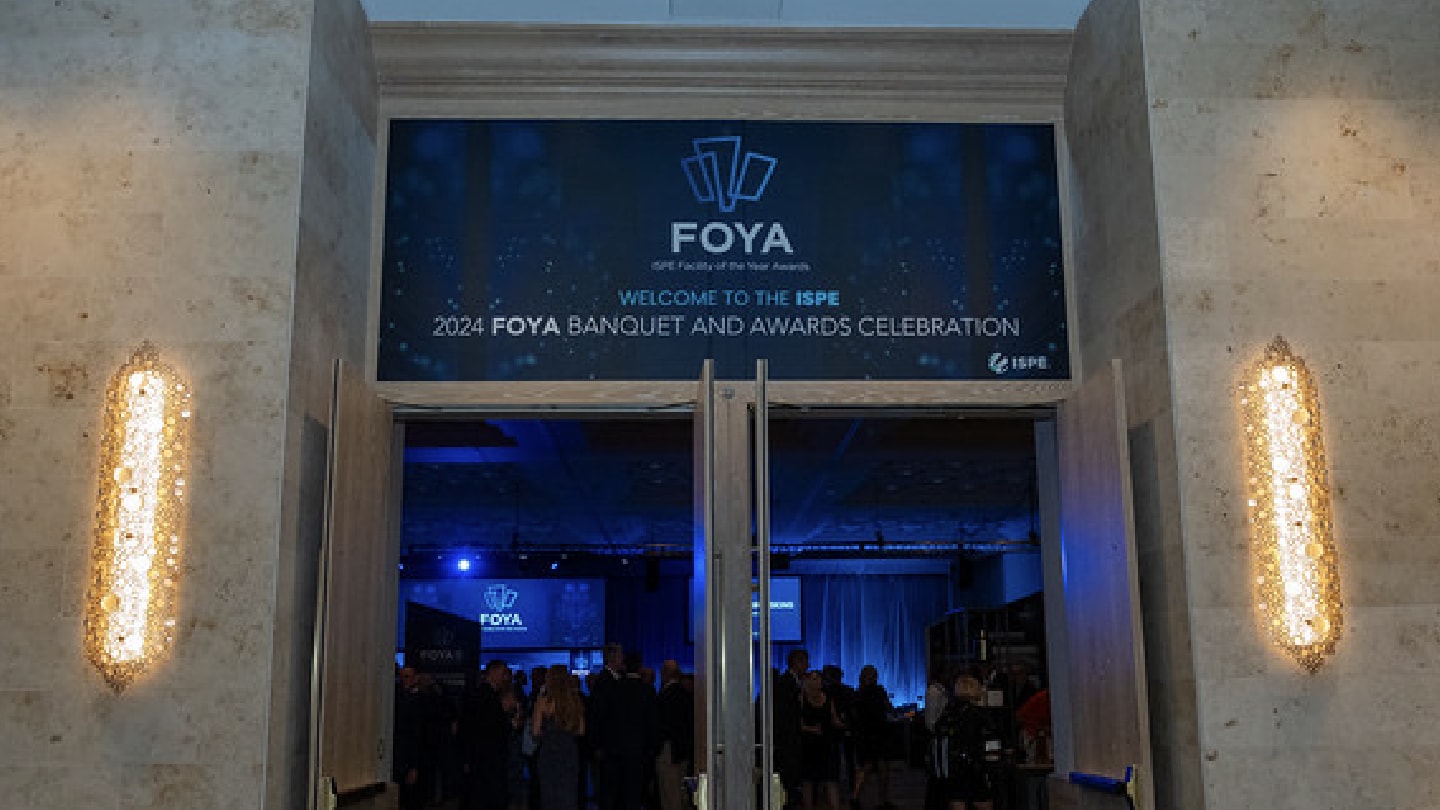
What is the process for the awards? And what is involved in the judging?
The process starts every year in August when submissions open on the ISPE website. A project can be entered into multiple categories. There’s a dedicated FOYA page to see the criteria a project needs to meet – and we have a video that walks through the process and gives recommendations. If someone wants guidance, we connect them with a FOYA mentor who can help determine if their project is a good fit and provide advice on how to put together a strong submission. We also encourage people to look at past winners to get a sense of previous projects that have been recognized.
Submissions this year close on Friday, December 5. At that point, an ISPE committee does the first review to check each submission meets the minimum criteria. For example, the facility has to actually be producing the therapy it was built for. We also check other factors, such as safety. Was the project executed with world-class safety standards? Was the construction workforce safe throughout the entire build? This initial screening ensures that only projects meeting baseline expectations move forward. If a submission doesn’t make it through, we let the applicant know why.
Submissions then go to the judging committee and judges get three to four weeks to review the materials. Being good engineers, we use a rubric and an Excel spreadsheet. Each judge scores the submissions against criteria and adds comments. Within a given year, you’re comparing the submissions in front of you, but it’s not just about picking the best of that year’s group. You must also ask, is this project truly advancing the industry? We don’t want to award something just because it’s the best in a given year. It also needs to stand up against winners from prior years. The idea is to keep pushing innovation, technology, and excellence forward.
The judges go category by category, and then we come together for a multiple-day meeting – usually over a weekend since it’s all volunteer time. We go through every submission. Each judge talks through their scoring and perspective. After we’ve reviewed all the categories, we ask which submission deserves the overall Facility of the Year Award.
One of the things I love about FOYA is the diversity of the projects. Sure, we see billion-dollar mega-facilities, but we’ve also awarded smaller projects – sometimes just a single room or a single piece of equipment – because they brought something innovative to the table. You don’t need a massive budget to win.
For the 2025 Awards, can you give a few examples of what made some of the winners stand out?
For me personally, the Pharma 4.0 category winner, CSL Behring, was very interesting to me. The project added significant capacity to an existing manufacturing campus, but what really stood out was how thoroughly they implemented automation and digitalization. They didn’t just automate a few steps; they designed the entire facility to be automated and digitized end to end. From warehouse operations to the core manufacturing process, from data acquisition to machine connectivity, everything is integrated through their manufacturing systems. It’s a great example of how a facility can be fully automated.
Pharma 4.0 tends to get a lot of attention because it represents the future of our industry. As automation, AI, and machine learning continue to develop, the importance of Pharma 4.0 will only grow. That’s why, at our conferences, committees are always looking for presenters who can share real-world use cases. People want to know: where did you run into challenges? Where did you succeed? And what lessons can others learn?
In the Social Impact – Sustainability Excellence category, Sanofi’s vaccine manufacturing facility in Toronto was the winner. However, they didn’t win for their core process – it was for their wastewater treatment. Sustainability is a huge focus right now in the industry, and water use, in particular, is something many companies are tackling.
Sanofi built a system to process and purify wastewater so it can be reused for facility utilities. They do not use it in the product, but it’s still a significant step. They produce 500 cubic meters of high-purity reuse water every day. It’s a great example of sustainability in practice that has a real impact on resource use and energy consumption.
Then there’s Bayer Healthcare. Under the Social Impact Award, we consider several areas including sustainability, unmet medical needs, and drug shortages. Sanofi took the sustainability recognition, but Bayer received the Social Impact Award for their work addressing unmet medical needs. Their facility focuses on cell and gene therapies – specifically allogeneic therapies.
The facility isn’t a full-scale commercial manufacturing plant. It sits between R&D and commercial scale, which is exactly what’s needed to advance the cell and gene therapy manufacturing field. Allogeneic therapies are something everyone is striving for, and this facility is one of the first dedicated to them. The way Bayer executed the project and designed the platform to bring these therapies forward was very innovative.
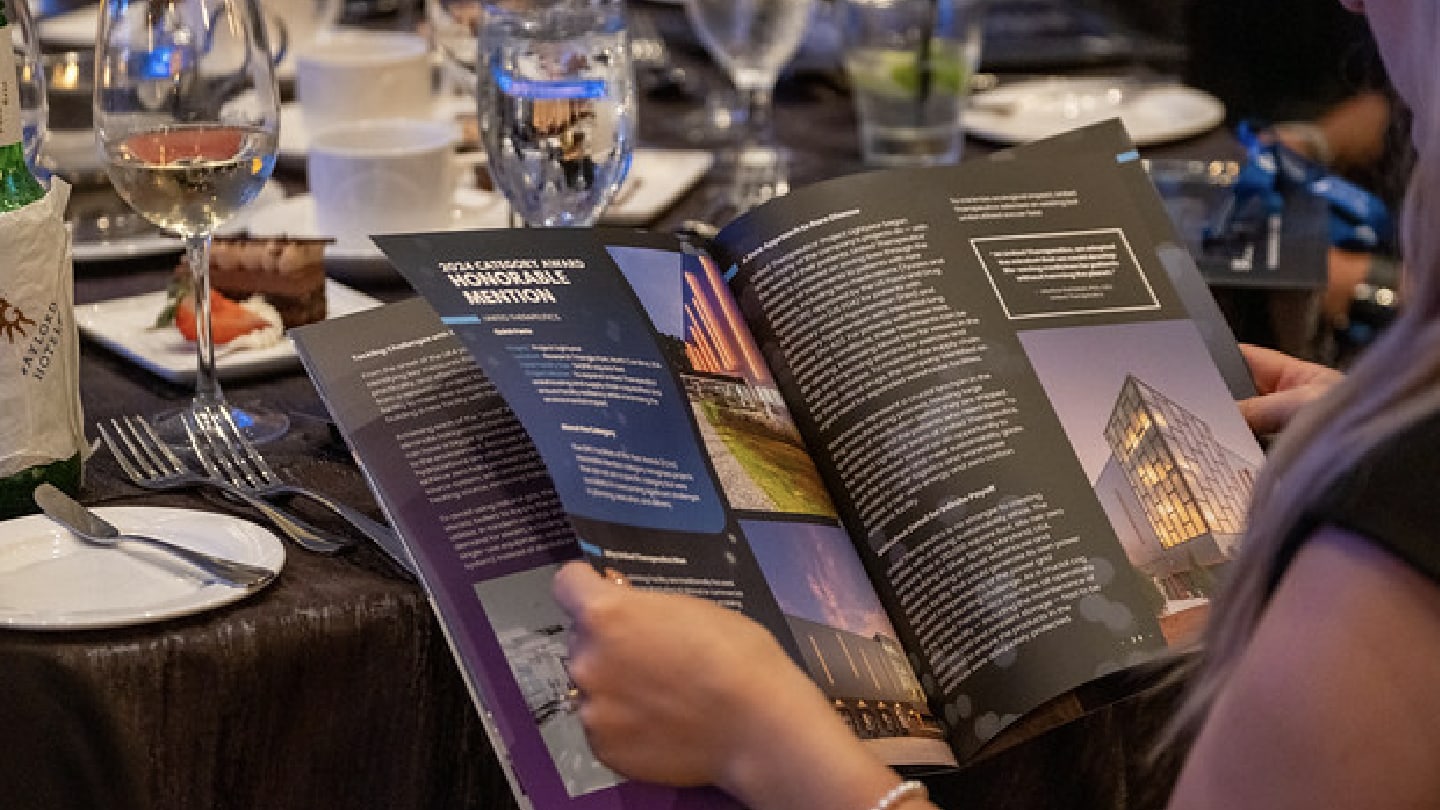
Are there any trends you’ve noticed in the category winners or entries as a whole?
Two big themes stand out: sustainability and the continuing Pharma 4.0 journey.
Sustainability is becoming a real driver across the industry. At the end of the day, our mission is to improve patients’ lives, but we also have a responsibility to care for the environment and the planet while we do that. Almost every submission has a sustainability component. Some are bigger than others, but the thread is always there.
On the Pharma 4.0 side, the adoption of automation, digitalization, and data connectivity keeps expanding. What I think we’ll start to see more of in the near future is companies leveraging AI and machine learning to connect more devices and equipment. We now have systems capable of handling millions of data points in a facility. The challenge is identifying which data really matters – making correlations and understanding how it impacts the product. AI can help by supporting digital twins and predictive analytics. Instead of reacting when something goes wrong, AI will allow us to predict potential issues before they even happen.
Many companies have already put digital twins in place, but we’re early in that journey. Automation and digital systems help us problem-solve faster, find root causes, and fix issues. But the next step is to be truly predictive by stopping problems before they start.
What tips or insights can you offer to companies that are thinking about entering the awards?
Start early. Don’t wait until November to begin writing your submission because it takes time to distil a very complex project into just a few pages and diagrams. We put limits on submission lengths – judges can’t read a 100-page document – so you have to be concise. The challenge is to tell a clear, impactful story within those boundaries.
Focus on the whys. Why was your project game-changing? Why was it innovative? Why was it better than what people had done before? If you can boil it down to those salient points and make your message clear, you’ll have a strong submission.
Another tip is to involve the entire team. Even though the company submitting owns the facility or asset, these projects are always collaborative. Engineering firms, equipment providers, and service providers all play a role and can bring valuable perspectives on where the project excelled to strengthen a submission.
But again, this takes time. We’ve had many companies start too late and tell us afterward that they wished they had started earlier, which would have made their submission stronger.
What do you see as potential future directions for manufacturing or facilities?
The future vision could be “lights out” manufacturing – where every step of the process is automated. We’re already seeing companies automate or use robotics for almost every stage of production. Imagine this. A truck backs up to the dock; an automated guided vehicle picks up the pallet, takes it into the automated warehouse, and the system reads a QR code to know exactly what it is and where it should go. The warehouse racks it, retrieves it when needed, and delivers it to the shop floor – all without human intervention. The idea is to remove as much manual handling as possible and automate the process so it’s predictable and reliable.
Looking ahead, our workforce will need new skills. People will need to be trained not just in operations but in understanding automation itself, such as how programming works and how to validate the analytics behind the systems.
If pharma is going to use automation then it must be flawless. The code and the software analytics that confirm the right material is being picked and sent to the right place are critical.
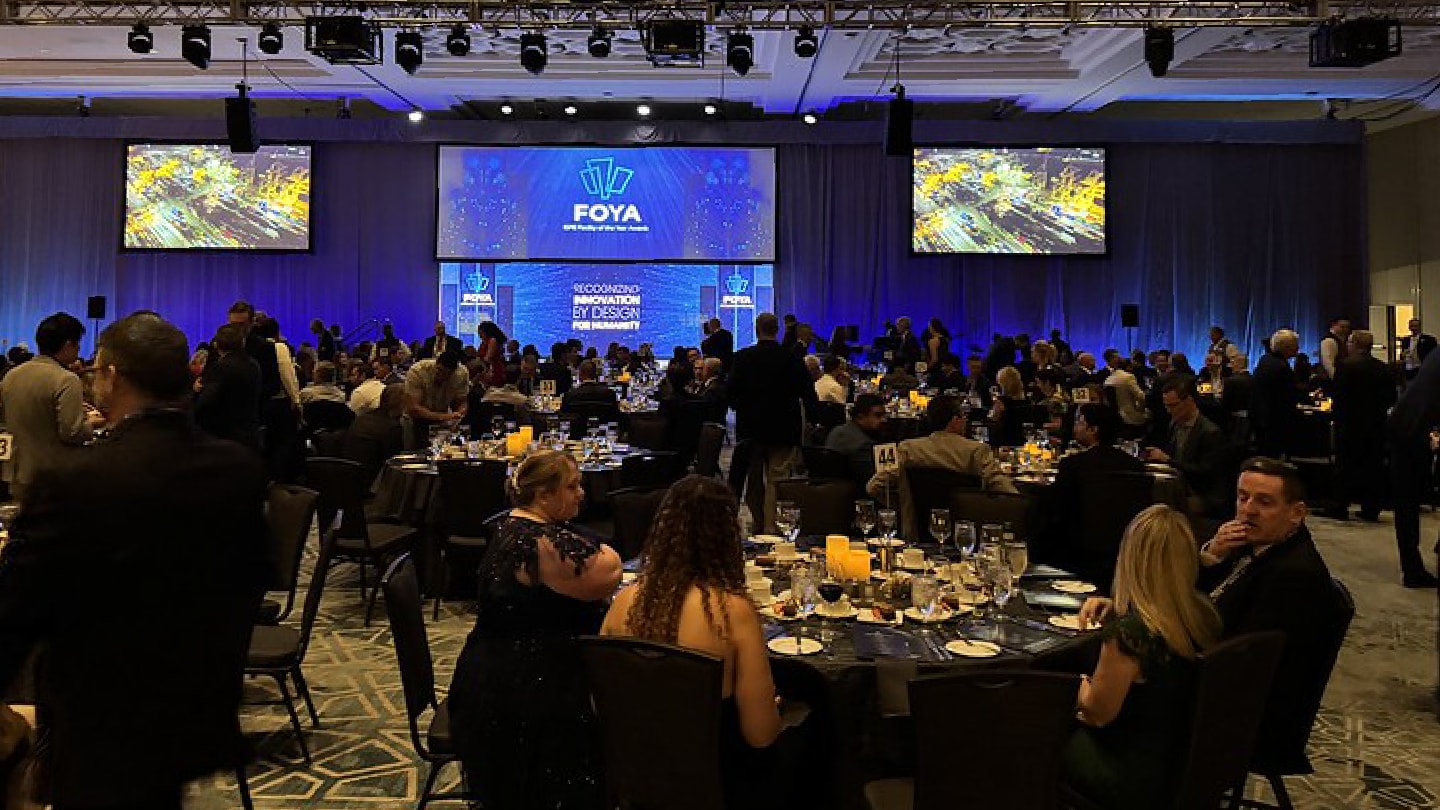
What can you tell us about upcoming ISPE events?
I really believe that ISPE is the perfect forum to talk about future trends and where the industry is headed. At our 2025 ISPE Annual Meeting & Expo, taking place October 26-29 in Charlotte, North Carolina, and virtually, we’re going to focus heavily on Pharma 4.0.
Every year, we also hold a FOYA Banquet and Awards Celebration when we hand out the FOYA awards. This year’s event is taking place Sunday, 26 October. Each of the category winners gets time on stage. It’s a black-tie event and people have a wonderful time. It’s also an important opportunity to recognize the incredible work behind these facilities. It’s a celebration of innovation and teamwork – and I think it’s one of the highlights of the year.
2025 Category Winners
Innovation
Touchlight
Development and manufacture of novel synthetic DNA to enable the future of genetic medicines
Operations – Operational Excellence
Johnson & Johnson Innovative Medicine
Flexible bottle packaging line
Operations – Project Execution
Johnson & Johnson Innovative Medicine
BioCork 3.2 expansion project
Pharma 4.0
CSL Behring
Project Aurora – Facility F base fractionation
Social Impact – Unmet Medical Needs
Bayer Healthcare LLC
Cell therapy launch and manufacturing facility
Social Impact – Sustainability Excellence
Sanofi
Building 99 – wastewater treatment and recovery plant
Honorable Mention
Erbe Elektromedizin GmbH
Erbe 4.1
Honorable Mention
United Therapeutics
Clinical xenotransplantation DPF facility
